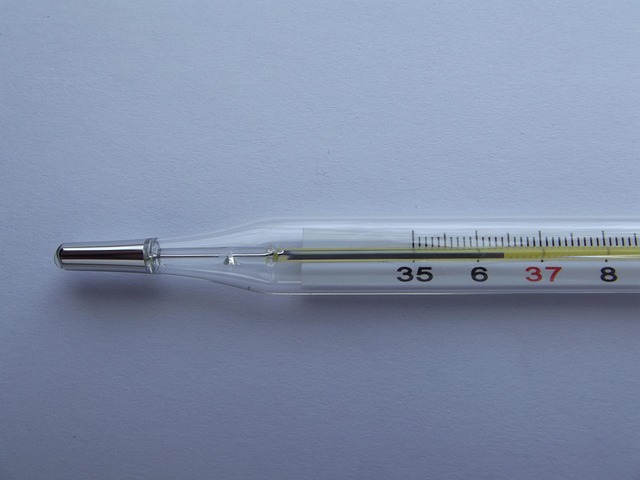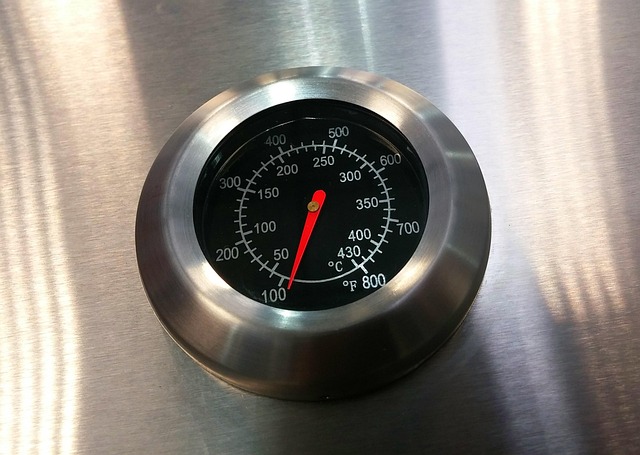Our bodies naturally prefer cooler temperatures (15-20°C/60-70°F) for sleep, with optimal bedroom temps between 60-67°F (15-19°C). Modern thermostats and smart adjustments, based on atmospheric science knowledge, help maintain this range. Calibrated settings ensure restful sleep, enhancing deeper stages and overall recovery.
Improve your sleep quality with the power of temperature control. Our bodies naturally fluctuate in temperature during rest, and understanding these cycles is key to optimal sleep. This guide explores how to harness that knowledge by optimizing your sleep environment, from keeping cool with strategic ventilation to using technology to regulate precise temperatures. Discover techniques to create a soothing, temperature-stable sanctuary for restorative sleep.
- Understanding Your Body's Temperature Preferences
- Optimizing Sleep Environments for Cooler Rest
- Techniques to Regulate and Maintain Ideal Temperatures
Understanding Your Body's Temperature Preferences

Our bodies are finely tuned to temperature changes, with our core body temperature naturally dropping during sleep. Understanding this internal rhythm is key to optimizing your rest. Different people have different thermal preferences; some thrive in cooler environments while others prefer warmth. This variation stems from a complex interplay of factors like genetics, age, and overall health.
While modern innovations offer solutions like liquid-in-glass vs digital thermostats, the fundamental concept remains the same: control and stability. An altitude temperature drop, for instance, can trigger a physiological response that aids sleepiness. However, it’s crucial to find the right balance; an overly cold or hot environment can disrupt your body’s natural rhythm, making it harder to achieve restful sleep. Discovering your optimal temperature setting is a personal journey, but understanding how atmospheric science’s greenhouse effect mechanism influences our comfort zones can be a good starting point, leading you to create a truly ideal sleep sanctuary—both physically and thermally—that aligns with nature’s subtle cues found in weather systems analysis.
Optimizing Sleep Environments for Cooler Rest

Optimizing your sleep environment for cooler rest is a significant step towards enhancing sleep quality. The ideal temperature for sleep typically ranges between 15-20°C (60-70°F). This cool atmosphere signals to your body that it’s time to wind down, promoting relaxation and preparing you for deep sleep. To achieve this, consider adjusting your thermostat and ensuring proper ventilation in your bedroom. The use of fans or air conditioners can help regulate the temperature more accurately, preventing sudden shifts during the night.
Understanding heat transport effects and barometric pressure from meteorology insights can also guide your efforts. For instance, using a fan on a hot summer night can facilitate heat dissipation while keeping the room relatively cool. Accurate calibration of your thermostat ensures that these adjustments are precise, allowing you to maintain the optimal temperature range throughout the night. By embracing these practices, you’ll find yourself enjoying a more peaceful and restorative sleep as the ambient environment works in harmony with your body’s natural rhythms.
Techniques to Regulate and Maintain Ideal Temperatures

Regulating and maintaining ideal temperatures is a crucial aspect of optimizing sleep quality. The human body’s natural process of homeostasis regulation seeks to keep internal temperatures stable, but external factors can significantly impact this balance. One effective technique involves adjusting your bedroom’s temperature to suit your sleep needs. Typically, a cooler environment between 60-67°F (15-19°C) is recommended for better rest due to its positive effects on thermal efficiency calculations. This range promotes deeper sleep stages and can enhance overall sleep quality.
Consider incorporating smart thermostats or programmable thermostats into your bedtime routine. These tools allow you to set specific temperatures for different times of the day, ensuring a consistent and comfortable environment throughout your slumber. Additionally, using lightweight, breathable bedding and adjusting your wardrobe accordingly can aid in maintaining optimal temperatures. If desired, give us a call at accuracy calibration for expert advice on enhancing your sleep sanctuary’s thermal comfort.
Maintaining optimal temperatures is key to enhancing sleep quality. By understanding your body’s temperature preferences, optimizing your sleep environment, and employing techniques to regulate and maintain ideal conditions, you can create a cooler, more comfortable rest. This simple yet effective strategy ensures your body and mind are aligned for restorative sleep, leaving you refreshed and rejuvenated each morning.
